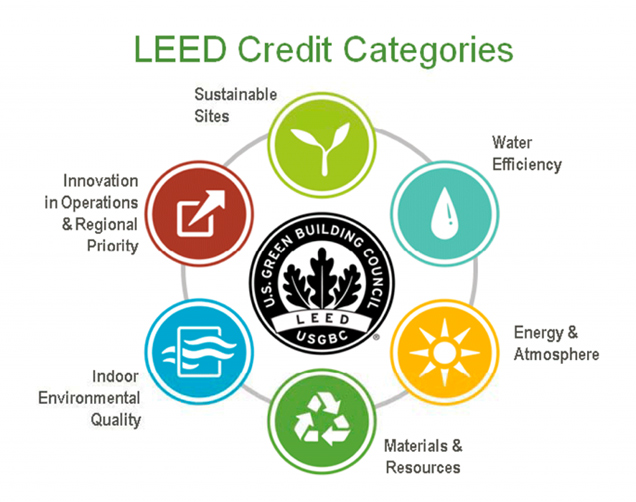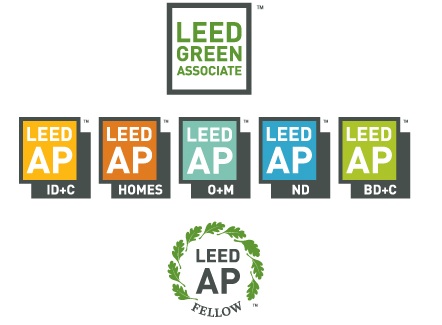Leadership in Energy and Environmental Design (LEED) is one of the most popular green building certification programs used worldwide. Developed by the non-profit U.S. Green Building Council it includes a set of rating systems for the design, construction, operation, and maintenance of green buildings, homes, and neighborhoods that aims to help building owners and operators be environmentally responsible and use resources efficiently.

LEED for Building Design and Construction (LEED for BD+C): applicable to New Construction and Major Renovations of buildings
LEED for Interior Design and Construction (LEED for ID+C): applicable to projects whose scope is limited to interior fit-out
LEED for Operations & Maintenance (LEED for O & M): applicable to existing buildings undergoing improvement or minor upgrades
LEED for Neighborhood Development (LEED for ND) : applicable to land development or mixed-use development projects
LEED for Homes: applicable to low-rise or medium-rise residential projects
Individuals can become accredited (vs certified).
The Green Building Certification Institute (GBCI) describes Professional Accreditation as follows: “LEED Professional Credentials demonstrate current knowledge of green building technologies, best practices, and the rapidly evolving LEED Rating Systems. They show differentiation in a growing and competitive industry, and they allow for varied levels of specialization. A LEED Professional Credential provides employers, policymakers, and other stakeholders with assurances of an individual’s level of competence and is the mark of the most qualified, educated, and influential green building professionals in the marketplace



